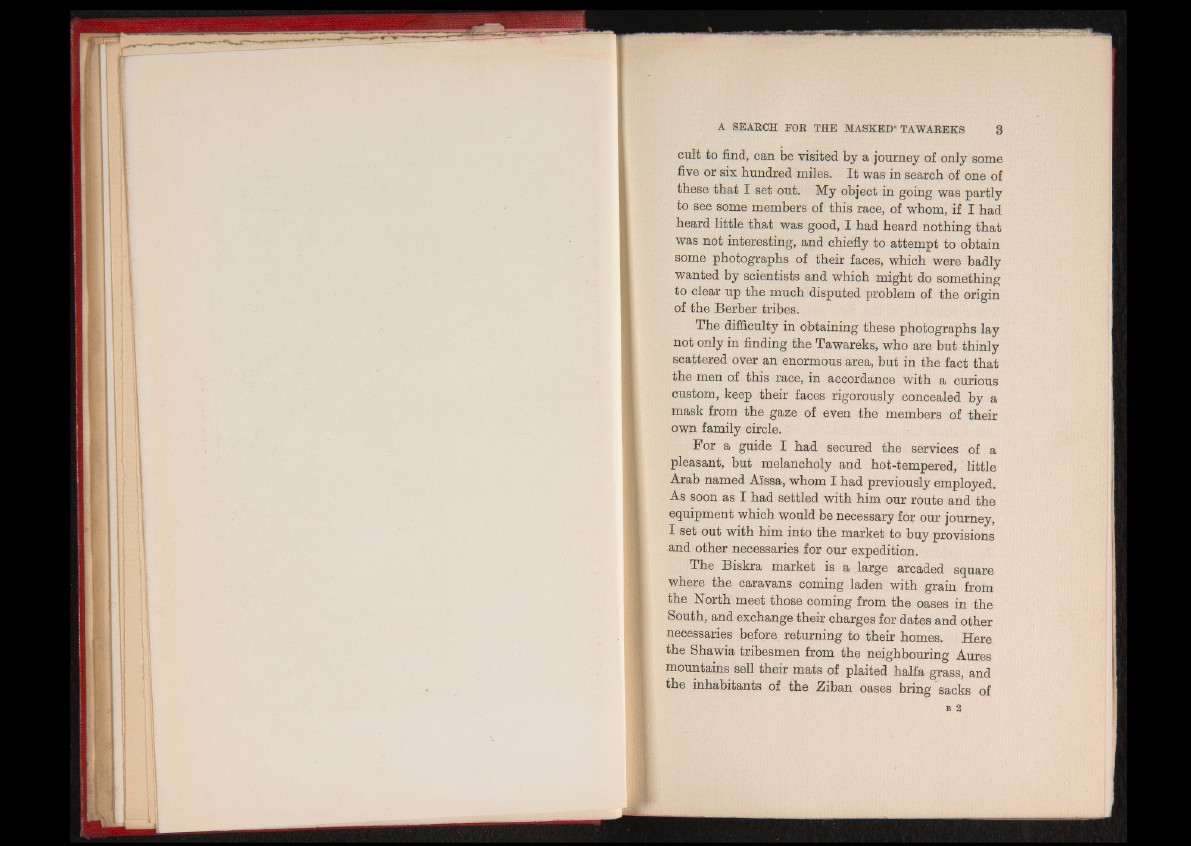
cult to find, can be visited by a journey of only some
five or six hundred miles. It was in search of one of
these that I set out. My object in going was partly
to see some members of this race, of whom, if I had
heard little that was good, I had heard nothing that
was not interesting, and chiefly to attempt to obtain
some photographs of their faces, which were badly
wanted by scientists and which might do something
to clear up the much disputed problem of the origin
of the Berber tribes.
The difficulty in obtaining these photographs lay
not only in finding the Tawareks, who are but thinly
scattered over an enormous area, but in the fact that
the men of this race, in accordance with a curious
custom, keep their faces rigorously concealed by a
mask from the gaze of even the members of their
own family circle.
For a guide I had secured the services of a
pleasant, but melancholy and hot-tempered, little
Arab named Aissa, whom I had previously employed.
As soon as I had settled with him our route and the
equipment which would be necessary for our journey,
I set out with him into the market to buy provisions
and other necessaries for our expedition.
The Biskra market is a large arcaded square
where the caravans coming laden with grain from
the North meet those coming from the oases in the
South, and exchange their charges for dates and other
necessaries before returning to their homes. Here
the Shawia tribesmen from the neighbouring Aures
mountains sell their mats of plaited halfa grass, and
the inhabitants of the Ziban oases bring sacks of
B 2